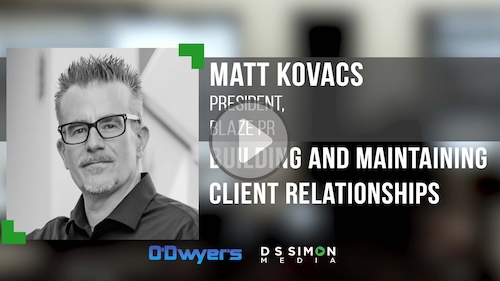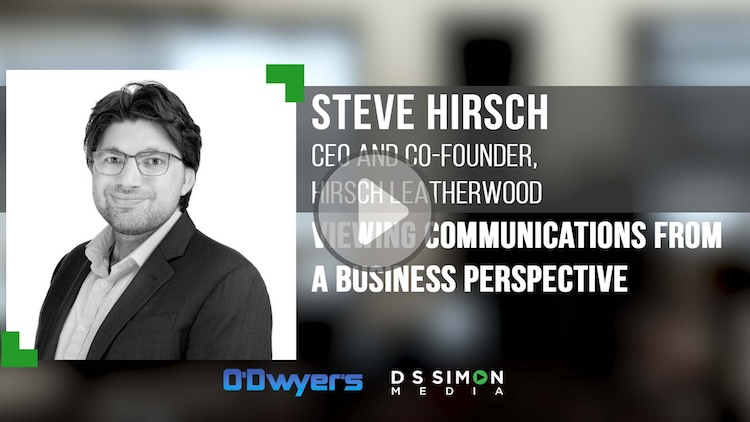The late CBS/NPR reporter Daniel Schorr used to say about people and events that, "If it's not in the media, then it doesn't exist." Today, it's more likely that if it's not in an online video, then it doesn't exist.
On the Internet, video is everywhere.
- An Adobe study found that videos account for nearly 80% of viral reach on social networks.
- More than four billion hours of video – mostly online – are viewed each month.
- YouTube, with its 800 million unique users each month and 100 hours of uploaded video each minute, is huge. YouTube channels, sponsored by companies, non-profits, sports teams, rock bands and individuals, not to mention terrorist groups, run into the hundreds of thousands.
 Matt Lauer is doused on the 'Today' show. |
Greatest recent example of the power of online video is the success of the ALS Ice Bucket Challenge, which used a push from Matt Lauer and Jimmy Fallon, a nudge from social media and a deluge of YouTube and Facebook videos from all manner of man, woman and animals to raise upwards of $41 million for ALS in little over a month.
Yes sir, online video is big, and public relations professionals ought to know how to develop effective online video content. Here's what's required.
· Centralize your focus.
Video viewer attention spans are short, so the most effective videos pack a punch in a short time frame.
So focus is key; that is, videos must be short, pointed and impactful in a brief period – preferably less than two minutes.
Twitter's Vine app, which developed from the Graphics Interchange Format (GIF) and enforces a six-second video time limit, is an example of the focus that must be applied to video.
· Build a memorable/ creative narrative that complements the visuals.
The best online video stories combine compelling video with direct and dramatic narrative writing.
The narrative should naturally include a plot and a climax/resolution.
The writing challenge in creating for video is to use words and phrases to emphasize the pictures; that is, to make sure that each word is necessary to complement the visual imagery. Stated another way, the best narrative is built around the images.
Make no mistake, the words should play second fiddle to the pictures; that's why they call it, "video."
· Go against the grain.
This is another way of saying, "Be creative." With thousands of videos added to the Web each day, yours must stand out from the crowd in order to get noticed. So it pays to be different.
One of the most famous online videos in this regard was Ritz Carlton's retelling of the odyssey of a stuffed giraffe that was lost at a Florida Ritz Carlton on a family vacation. The heart-warming travels of the giraffe – through a visit to the spa, jaunt in a golf cart, visit to the Ritz Loss Protection Area, etc. -- and eventual reuniting with his family earned the luxury hotel chain great positive attention and reiterated its theme of "legendary customer service."
· Be true to your target.
Again, just like any other public relations assignment, you must have a clear audience target in mind for the video. In Internet lingo, this is called "interest targeting," aiming content to a specific interest group. The closer an interest group can relate to your video, the more successful the video will be.
· Ask for the sale.
The purpose of many online videos is to sell products, solicit donations or build support in some way. In other words, the sponsoring organization wants a payoff for taking the time and expense to do the video. That's why a call to action, in which you "ask for the sale," may be a necessity. If you want a viewer to take action, you must ask him to do it.
Finally, it's important to recognize that even though video is, indeed, all around us and organizations everywhere and every day are placing video online – that still doesn't mean you produce video for the sake of making one. There must be a clear and compelling reason to do a video, a visuallyarresting subject that will attract viewers and a sufficient group of willing viewers interested in watching.
If there isn't a reason or a visually arresting subject or willing viewers, then the best video is no video.
And when in doubt ... get a bucket!
* * *
Fraser P. Seitel has been a communications consultant, author and teacher for 40 years. He may be reached directly at [email protected]. He is the author of the Prentice- Hall text The Practice of Public Relations, now in its eleventh edition, and co-author of Rethinking Reputation and Idea Wise.










 Have a comment? Send it to
Have a comment? Send it to 
No comments have been submitted for this story yet.